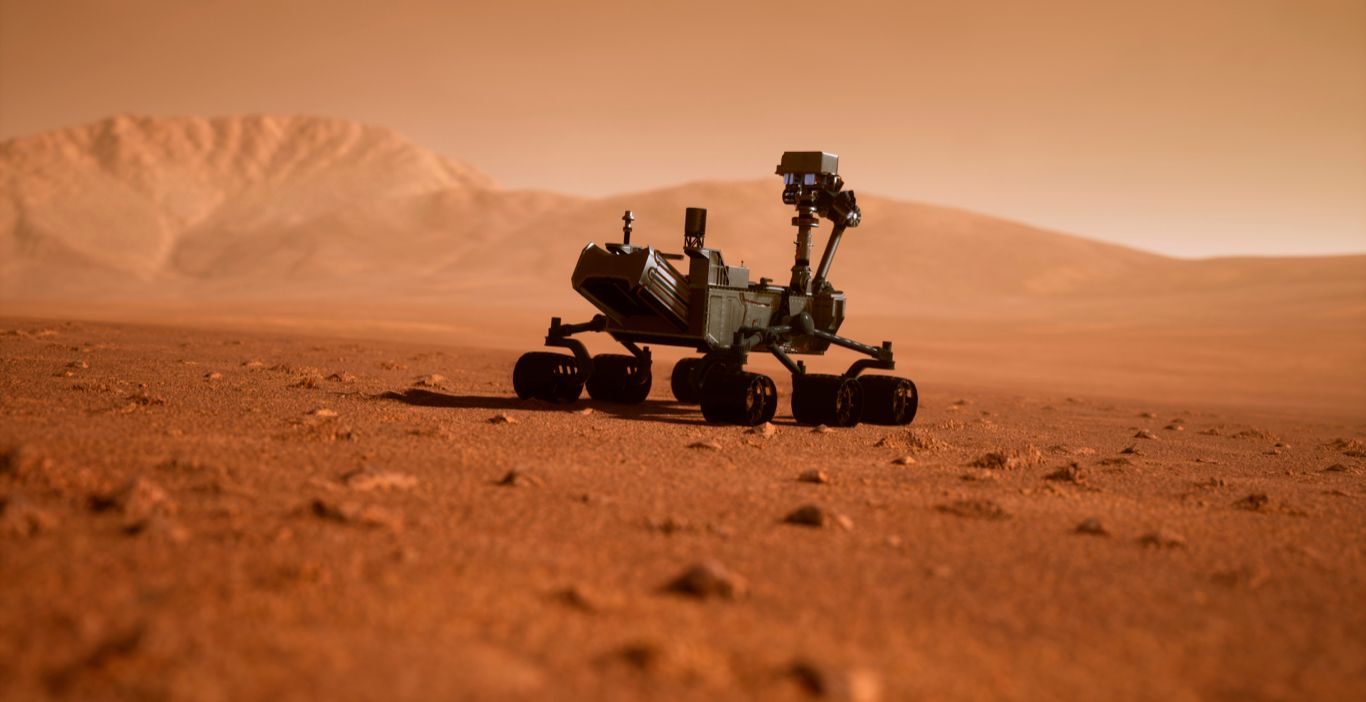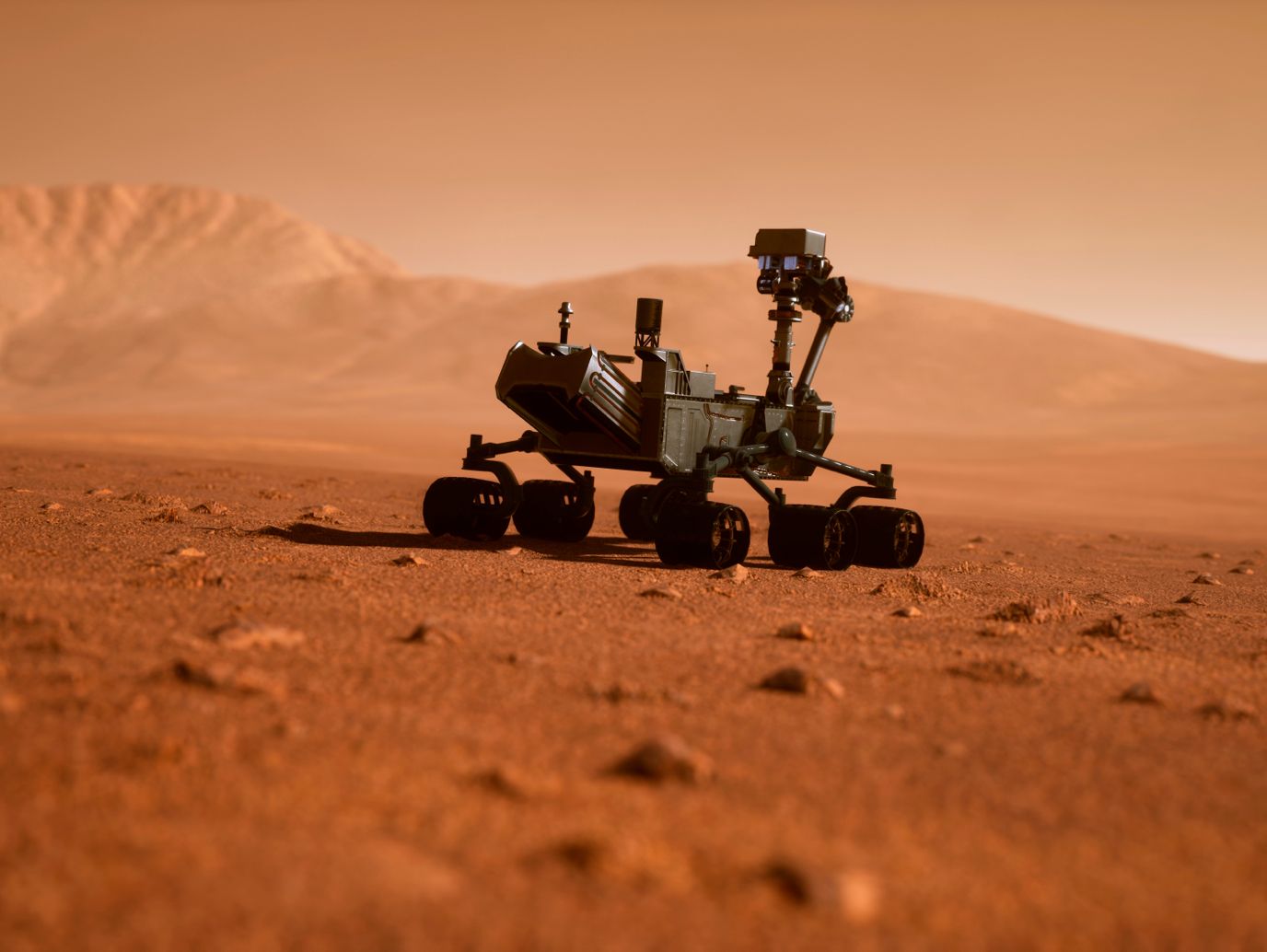31 March 2023
European and commercial space entities growing in confidence, while transparency is the key to the future - Space News Roundup

Good news for some launch startups this week (Image: Adobe)
As with last week, we have read about concerns regarding the supply of launch capabilities in the comings years. According to an article from Space News, an industry launch bottleneck, coupled with rising inflation, is being felt by customers. Reportedly, even SpaceX have raised their prices in accordance with inflation, with a ride-share launch rising by 10%, to $1.1 million for a 200kg satellite.
New launch vehicles are on the cusp of entering the market, and will surely play their part in easing supply worries. There’s been positive news for launch startups ABL Space (US) and Isar Aerospace (Germany), as they received additional funding for their respective launch projects. However, Boeing have announced a delay to their first crewed mission of their space capsule, Starliner. The long-awaited launch is now expected in the summer.
Outside of the launch market, European nations have been showing positive signs of growth, while commercial entities have announced more plans for lunar and martian exploration, proving that they are the ones paving the way for our future. However, a lack of global cooperation and transparency may be a far bigger threat to this success than inflation and a launch bottleneck. Efforts have been made to address these matters, but will adversaries be able to work closer together?
Space launch and European ambitions continue to grow
A lack of launch capabilities is a problem to not take lightly. One key ingredient behind the success of New Space is increased access to space, and at a drastically reduced price. Without that key pillar in place, investor confidence could quickly erode and the success of New Space may not be realised. The industry will be eagerly awaiting successful first launches of e.g. Blue Origin’s New Glenn, ULA’s Vulcan and Arianespace’s Ariane-6 rockets.
However, there was some positive news this week. ABL Space (US) announced on 24th March that they have been awarded a $60 million contract from the US Space Force for a responsive launch demonstration. This is part of the US plan to have tactically responsive access to space using commercial partners, being able to launch military satellites at short notice during times of conflict. ABL’s RS-1 rocket is also due to launch from Scotland at the SaxaVord Spaceport later this year. Similarly, German rocket maker Isar Aerospace has received an additional $165 million in funding, going towards the first launch of its Spectrum rocket, capable of carrying 1000kg into orbit, due to launch from Norway later this year.
Sadly, it hasn’t all been good news for launch startups recently. Last week we read about the financial worries facing Virgin Orbit, and on Friday they announced that they would be laying off the majority of their staff after failing to secure new investment. This may highlight the necessity for governments and investors to continue their support of these companies as they try to get off the ground, in turn allowing the whole industry to succeed.
European governments appear to be continuing their quest to become leaders in the news space age. According to the UK government website, figures show that UK space sector income grew by almost £1 billion, brining it to £17.5 billion, with employment up by almost 1,800 jobs. Also, on 7th March Spain announced the opening of its own space agency, and is of course already a member of ESA. The agency will be looking to support Spain’s use of satellites for Earth observation and imaging, and have also established a €45 million fund to support their space startups. Spain’s efforts perhaps reflect the overall European approach to space at the moment; to support the growth of their native space industries, secure a place at the table, and most importantly, encourage private sector growth.

NASA have more plans for robotics on Mars (Image: Adobe)
Commercial sector paving the way, but transparency holds the keys for success
The private sector alone may likely be responsible for the launch industry in the near future, as grand projects such as the US-led Artemis missions possibly become a thing of the past, and governments instead look to commercial partners for cost-effective and efficient access to space. We’re now also seeing the commercial sector take further steps into lunar and outer space exploration as well.
NASA has released a draft strategy for their long-term robotic martian exploration plans. Most interestingly, the plans emphasise “low-cost missions and commercial partnerships”. The strategy, named “Exploring Mars Together”, aims to lay out a series of missions to Mars once their Mars Sample Return (MSR) missions have all launched at the end of the decade (MSR missions are designed to collect martian rock samples and return them to Earth). Eric Ianson, director of the Mars Exploration Program at NASA Headquarters, suggested that these low-cost missions could possibly draw on experience from their Commercial Lunar Payload Services program (currently being used to work with private partners on lunar lander missions), or that smaller payloads could be transported as part of commercial missions, for example.
The dawn of commercial activity on the surface of the Moon is now just weeks away, as the iSpace lunar lander edges closer to its arrival date. With this new era closing-in, Lockheed Martin have announced that they will be establishing a subsidiary company, providing navigation and communications on the lunar surface, in plans which seem similar to ESA’s Moonlight Initiative. Crescent Space Services LLC will offer a network of satellites called Parsec, using their own satellites. Similar to Moonlight, the Parsec service will be offered to an array of both government and private sector clients. Lunar satellite constellations will likely become more of a necessity, as our presence on the Moon drastically increases in the coming years and decades.
As we know, Earth orbit is already dominated by commercial satellites, most recognisably being SpaceX’s Starlink megaconstellation. This year will also see the beginnings of Amazon’s Kuiper constellation, and now we have learnt more details about China’s rival plans. Their 13,000 Low Earth Orbit (LEO) constellation, named Guowang, will challenge rival western constellations, and with the country’s private sector growing, we also may see China employ some commercial entities to help construct it. China expect to launch the first satellites of the constellation this year.
China’s plans for this constellation may be alarming to some western leaders. On Wednesday NASA chief, Bill Nelson, criticised China for a lack of transparency surrounding their activities in Earth orbit. Regarding the construction of their Tiangong space station, he said that "They've put up three elements of their space station…And each time, in their booster rocket they did not reserve enough fuel in order to have a controlled reentry, and, therefore, it comes tumbling back through the atmosphere.” Will western nations maintain similar concerns about the construction of Guowang?
Bill Nelson may be correct. Transparency across at least a basic set of principles will be essential to ensure a safe, sustainable and peaceful future in space. For All Moonkind Inc, an organisation dedicated to protecting human heritage in outer space, has this week announced the creation of For All Moonkind's Institute on Space Law and Ethics. The role of the institute is to promote the development of a foundation and framework for responsible behaviour in space, and “seeks to reduce the potential for conflict and assure the sustainable exploration and use of space and its resources for the benefit of all humankind,” (forallmoonkind.org, 2023). Similarly, on February 7th The Hague Institute for Global Justice revealed the Washington Compact on Norms of Behavior for Commercial Space Operations.
These could be seen as very positive steps towards building a truly universal and transparent rulebook for space. However, the question remains; how easy will it be to bring all adversaries to the table, who will be willing to make concessions? As it stands, there appears to be a growing divide between these adversaries, with the US and its western allies on one side; China, Russia and non-western leaning nations on the other. Geopolitics will no doubt fuel this fire, and we will have to measure the Chinese backlash to Taiwanese president Tsai Ing-Wen’s visit to this US this week.
Furthermore, on Wednesday, a Russian Soyuz-2.1v rocket launched carrying a secretive payload, designated Kosmos-2568. According to NASASpaceflight.com it’s maybe an “inspector satellite”, designed to match the trajectory and flight path of American spy satellites. Sadly, whether true or not, this incident it reflects the current state of trust amongst superpowers in space, once touted as a politically neutral realm. It may take yet more efforts to guarantee a peaceful future in space.
External Links
This Week
*News articles posted here are not property of ANASDA GmbH and belong to their respected owners. Postings here are external links only.
Our future in space

Good news for some launch startups this week (Image: Adobe)
31 March 2023
European and commercial space growing in confidence, while transparency is the key to the future - Space News Roundup
As with last week, we have read about concerns regarding the supply of launch capabilities in the comings years. According to an article from Space News, an industry launch bottleneck, coupled with rising inflation, is being felt by customers. Reportedly, even SpaceX have raised their prices in accordance with inflation, with a ride-share launch rising by 10%, to $1.1 million for a 200kg satellite.
New launch vehicles are on the cusp of entering the market, and will surely play their part in easing supply worries. There’s been positive news for launch startups ABL Space (US) and Isar Aerospace (Germany), as they received additional funding for their respective launch projects. However, Boeing have announced a delay to their first crewed mission of their space capsule, Starliner. The long-awaited launch is now expected in the summer.
Outside of the launch market, European nations have been showing positive signs of growth, while commercial entities have announced more plans for lunar and martian exploration, proving that they are the ones paving the way for our future. However, a lack of global cooperation and transparency may be a far bigger threat to this success than inflation and a launch bottleneck. Efforts have been made to address these matters, but will adversaries be able to work closer together?
Space launch and European ambitions continue to grow
A lack of launch capabilities is a problem to not take lightly. One key ingredient behind the success of New Space is increased access to space, and at a drastically reduced price. Without that key pillar in place, investor confidence could quickly erode and the success of New Space may not be realised. The industry will be eagerly awaiting successful first launches of e.g. Blue Origin’s New Glenn, ULA’s Vulcan and Arianespace’s Ariane-6 rockets.
However, there was some positive news this week. ABL Space (US) announced on 24th March that they have been awarded a $60 million contract from the US Space Force for a responsive launch demonstration. This is part of the US plan to have tactically responsive access to space using commercial partners, being able to launch military satellites at short notice during times of conflict. ABL’s RS-1 rocket is also due to launch from Scotland at the SaxaVord Spaceport later this year. Similarly, German rocket maker Isar Aerospace has received an additional $165 million in funding, going towards the first launch of its Spectrum rocket, capable of carrying 1000kg into orbit, due to launch from Norway later this year.
Sadly, it hasn’t all been good news for launch startups recently. Last week we read about the financial worries facing Virgin Orbit, and on Friday they announced that they would be laying off the majority of their staff after failing to secure new investment. This may highlight the necessity for governments and investors to continue their support of these companies as they try to get off the ground, in turn allowing the whole industry to succeed.
European governments appear to be continuing their quest to become leaders in the news space age. According to the UK government website, figures show that UK space sector income grew by almost £1 billion, brining it to £17.5 billion, with employment up by almost 1,800 jobs. Also, on 7th March Spain announced the opening of its own space agency, and is of course already a member of ESA. The agency will be looking to support Spain’s use of satellites for Earth observation and imaging, and have also established a €45 million fund to support their space startups. Spain’s efforts perhaps reflect the overall European approach to space at the moment; to support the growth of their native space industries, secure a place at the table, and most importantly, encourage private sector growth.

NASA have more plans for robotics on Mars (Image: Adobe)
Commercial sector paving the way, but transparency holds the keys for success
The private sector alone may likely be responsible for the launch industry in the near future, as grand projects such as the US-led Artemis missions possibly become a thing of the past, and governments instead look to commercial partners for cost-effective and efficient access to space. We’re now also seeing the commercial sector take further steps into lunar and outer space exploration as well.
NASA has released a draft strategy for their long-term robotic martian exploration plans. Most interestingly, the plans emphasise “low-cost missions and commercial partnerships”. The strategy, named “Exploring Mars Together”, aims to lay out a series of missions to Mars once their Mars Sample Return (MSR) missions have all launched at the end of the decade (MSR missions are designed to collect martian rock samples and return them to Earth). Eric Ianson, director of the Mars Exploration Program at NASA Headquarters, suggested that these low-cost missions could possibly draw on experience from their Commercial Lunar Payload Services program (currently being used to work with private partners on lunar lander missions), or that smaller payloads could be transported as part of commercial missions, for example.
The dawn of commercial activity on the surface of the Moon is now just weeks away, as the iSpace lunar lander edges closer to its arrival date. With this new era closing-in, Lockheed Martin have announced that they will be establishing a subsidiary company, providing navigation and communications on the lunar surface, in plans which seem similar to ESA’s Moonlight Initiative. Crescent Space Services LLC will offer a network of satellites called Parsec, using their own satellites. Similar to Moonlight, the Parsec service will be offered to an array of both government and private sector clients. Lunar satellite constellations will likely become more of a necessity, as our presence on the Moon drastically increases in the coming years and decades.
As we know, Earth orbit is already dominated by commercial satellites, most recognisably being SpaceX’s Starlink megaconstellation. This year will also see the beginnings of Amazon’s Kuiper constellation, and now we have learnt more details about China’s rival plans. Their 13,000 Low Earth Orbit (LEO) constellation, named Guowang, will challenge rival western constellations, and with the country’s private sector growing, we also may see China employ some commercial entities to help construct it. China expect to launch the first satellites of the constellation this year.
China’s plans for this constellation may be alarming to some western leaders. On Wednesday NASA chief, Bill Nelson, criticised China for a lack of transparency surrounding their activities in Earth orbit. Regarding the construction of their Tiangong space station, he said that "They've put up three elements of their space station…And each time, in their booster rocket they did not reserve enough fuel in order to have a controlled reentry, and, therefore, it comes tumbling back through the atmosphere.” Will western nations maintain similar concerns about the construction of Guowang?
Bill Nelson may be correct. Transparency across at least a basic set of principles will be essential to ensure a safe, sustainable and peaceful future in space. For All Moonkind Inc, an organisation dedicated to protecting human heritage in outer space, has this week announced the creation of For All Moonkind's Institute on Space Law and Ethics. The role of the institute is to promote the development of a foundation and framework for responsible behaviour in space, and “seeks to reduce the potential for conflict and assure the sustainable exploration and use of space and its resources for the benefit of all humankind,” (forallmoonkind.org, 2023). Similarly, on February 7th The Hague Institute for Global Justice revealed the Washington Compact on Norms of Behavior for Commercial Space Operations.
These could be seen as very positive steps towards building a truly universal and transparent rulebook for space. However, the question remains; how easy will it be to bring all adversaries to the table, who will be willing to make concessions? As it stands, there appears to be a growing divide between these adversaries, with the US and its western allies on one side; China, Russia and non-western leaning nations on the other. Geopolitics will no doubt fuel this fire, and we will have to measure the Chinese backlash to Taiwanese president Tsai Ing-Wen’s visit to this US this week.
Furthermore, on Wednesday, a Russian Soyuz-2.1v rocket launched carrying a secretive payload, designated Kosmos-2568. According to NASASpaceflight.com it’s maybe an “inspector satellite”, designed to match the trajectory and flight path of American spy satellites. Sadly, whether true or not, this incident it reflects the current state of trust amongst superpowers in space, once touted as a politically neutral realm. It may take yet more efforts to guarantee a peaceful future in space.
Share this article
External Links
This Week
*News articles posted here are not property of ANASDA GmbH and belong to their respected owners. Postings here are external links only.
31 March 2023
European and commercial space growing in confidence, while transparency is the key to the future - Space News Roundup

Good news for some launch startups this week (Image: Adobe)
As with last week, we have read about concerns regarding the supply of launch capabilities in the comings years. According to an article from Space News, an industry launch bottleneck, coupled with rising inflation, is being felt by customers. Reportedly, even SpaceX have raised their prices in accordance with inflation, with a ride-share launch rising by 10%, to $1.1 million for a 200kg satellite.
New launch vehicles are on the cusp of entering the market, and will surely play their part in easing supply worries. There’s been positive news for launch startups ABL Space (US) and Isar Aerospace (Germany), as they received additional funding for their respective launch projects. However, Boeing have announced a delay to their first crewed mission of their space capsule, Starliner. The long-awaited launch is now expected in the summer.
Outside of the launch market, European nations have been showing positive signs of growth, while commercial entities have announced more plans for lunar and martian exploration, proving that they are the ones paving the way for our future. However, a lack of global cooperation and transparency may be a far bigger threat to this success than inflation and a launch bottleneck. Efforts have been made to address these matters, but will adversaries be able to work closer together?
Space launch and European ambitions continue to grow
A lack of launch capabilities is a problem to not take lightly. One key ingredient behind the success of New Space is increased access to space, and at a drastically reduced price. Without that key pillar in place, investor confidence could quickly erode and the success of New Space may not be realised. The industry will be eagerly awaiting successful first launches of e.g. Blue Origin’s New Glenn, ULA’s Vulcan and Arianespace’s Ariane-6 rockets.
However, there was some positive news this week. ABL Space (US) announced on 24th March that they have been awarded a $60 million contract from the US Space Force for a responsive launch demonstration. This is part of the US plan to have tactically responsive access to space using commercial partners, being able to launch military satellites at short notice during times of conflict. ABL’s RS-1 rocket is also due to launch from Scotland at the SaxaVord Spaceport later this year. Similarly, German rocket maker Isar Aerospace has received an additional $165 million in funding, going towards the first launch of its Spectrum rocket, capable of carrying 1000kg into orbit, due to launch from Norway later this year.
Sadly, it hasn’t all been good news for launch startups recently. Last week we read about the financial worries facing Virgin Orbit, and on Friday they announced that they would be laying off the majority of their staff after failing to secure new investment. This may highlight the necessity for governments and investors to continue their support of these companies as they try to get off the ground, in turn allowing the whole industry to succeed.
European governments appear to be continuing their quest to become leaders in the news space age. According to the UK government website, figures show that UK space sector income grew by almost £1 billion, brining it to £17.5 billion, with employment up by almost 1,800 jobs. Also, on 7th March Spain announced the opening of its own space agency, and is of course already a member of ESA. The agency will be looking to support Spain’s use of satellites for Earth observation and imaging, and have also established a €45 million fund to support their space startups. Spain’s efforts perhaps reflect the overall European approach to space at the moment; to support the growth of their native space industries, secure a place at the table, and most importantly, encourage private sector growth.

NASA have more plans for robotics on Mars (Image: Adobe)
Commercial sector paving the way, but transparency holds the keys for success
The private sector alone may likely be responsible for the launch industry in the near future, as grand projects such as the US-led Artemis missions possibly become a thing of the past, and governments instead look to commercial partners for cost-effective and efficient access to space. We’re now also seeing the commercial sector take further steps into lunar and outer space exploration as well.
NASA has released a draft strategy for their long-term robotic martian exploration plans. Most interestingly, the plans emphasise “low-cost missions and commercial partnerships”. The strategy, named “Exploring Mars Together”, aims to lay out a series of missions to Mars once their Mars Sample Return (MSR) missions have all launched at the end of the decade (MSR missions are designed to collect martian rock samples and return them to Earth). Eric Ianson, director of the Mars Exploration Program at NASA Headquarters, suggested that these low-cost missions could possibly draw on experience from their Commercial Lunar Payload Services program (currently being used to work with private partners on lunar lander missions), or that smaller payloads could be transported as part of commercial missions, for example.
The dawn of commercial activity on the surface of the Moon is now just weeks away, as the iSpace lunar lander edges closer to its arrival date. With this new era closing-in, Lockheed Martin have announced that they will be establishing a subsidiary company, providing navigation and communications on the lunar surface, in plans which seem similar to ESA’s Moonlight Initiative. Crescent Space Services LLC will offer a network of satellites called Parsec, using their own satellites. Similar to Moonlight, the Parsec service will be offered to an array of both government and private sector clients. Lunar satellite constellations will likely become more of a necessity, as our presence on the Moon drastically increases in the coming years and decades.
As we know, Earth orbit is already dominated by commercial satellites, most recognisably being SpaceX’s Starlink megaconstellation. This year will also see the beginnings of Amazon’s Kuiper constellation, and now we have learnt more details about China’s rival plans. Their 13,000 Low Earth Orbit (LEO) constellation, named Guowang, will challenge rival western constellations, and with the country’s private sector growing, we also may see China employ some commercial entities to help construct it. China expect to launch the first satellites of the constellation this year.
China’s plans for this constellation may be alarming to some western leaders. On Wednesday NASA chief, Bill Nelson, criticised China for a lack of transparency surrounding their activities in Earth orbit. Regarding the construction of their Tiangong space station, he said that "They've put up three elements of their space station…And each time, in their booster rocket they did not reserve enough fuel in order to have a controlled reentry, and, therefore, it comes tumbling back through the atmosphere.” Will western nations maintain similar concerns about the construction of Guowang?
Bill Nelson may be correct. Transparency across at least a basic set of principles will be essential to ensure a safe, sustainable and peaceful future in space. For All Moonkind Inc, an organisation dedicated to protecting human heritage in outer space, has this week announced the creation of For All Moonkind's Institute on Space Law and Ethics. The role of the institute is to promote the development of a foundation and framework for responsible behaviour in space, and “seeks to reduce the potential for conflict and assure the sustainable exploration and use of space and its resources for the benefit of all humankind,” (forallmoonkind.org, 2023). Similarly, on February 7th The Hague Institute for Global Justice revealed the Washington Compact on Norms of Behavior for Commercial Space Operations.
These could be seen as very positive steps towards building a truly universal and transparent rulebook for space. However, the question remains; how easy will it be to bring all adversaries to the table, who will be willing to make concessions? As it stands, there appears to be a growing divide between these adversaries, with the US and its western allies on one side; China, Russia and non-western leaning nations on the other. Geopolitics will no doubt fuel this fire, and we will have to measure the Chinese backlash to Taiwanese president Tsai Ing-Wen’s visit to this US this week.
Share this article
External Links
This Week
*News articles posted here are not property of ANASDA GmbH and belong to their respected owners. Postings here are external links only.














